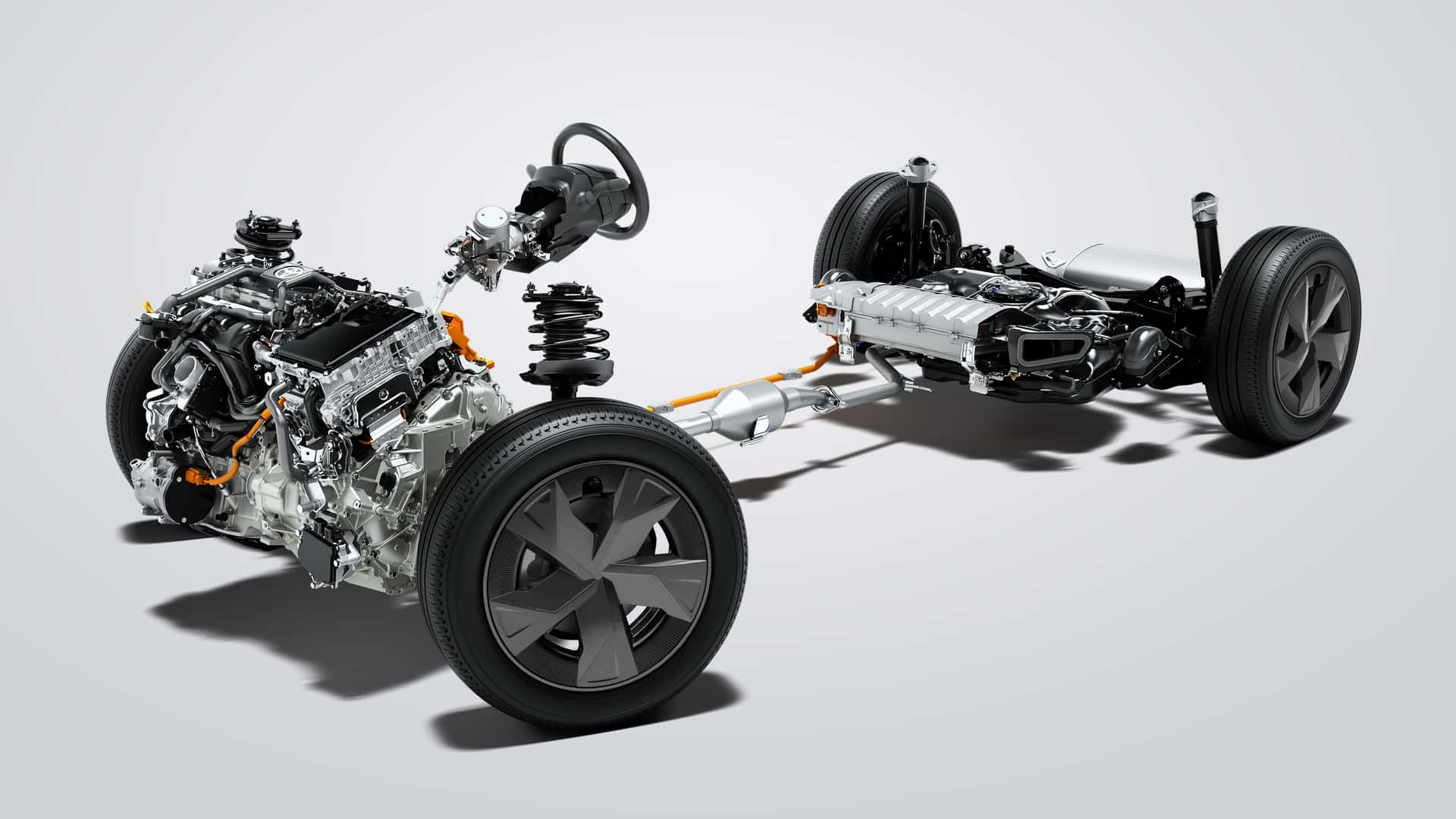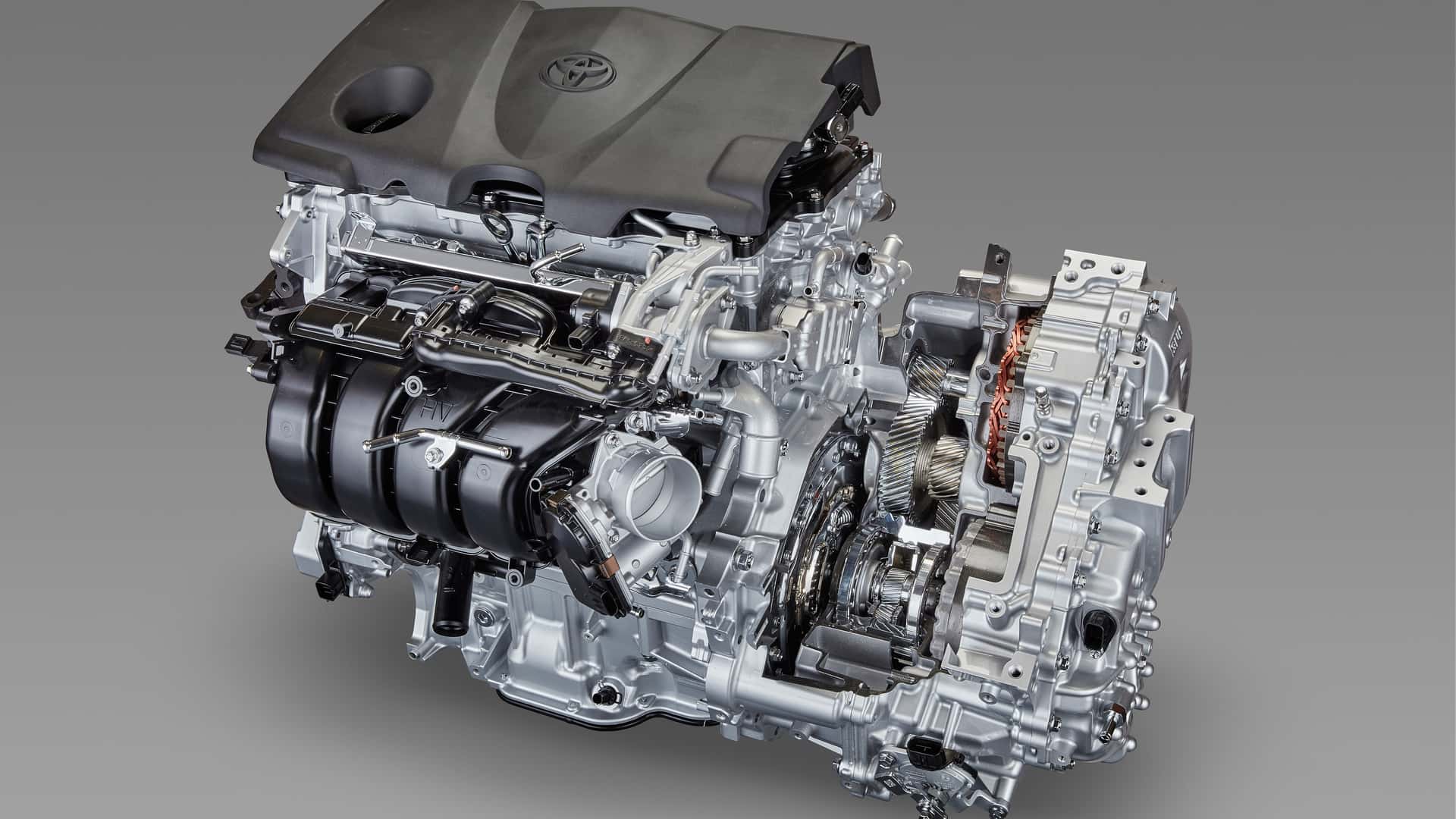Toyota's Hybrid System (THS) in the 2026 RAV4 sets a new standard in SUV engineering by significantly reducing fuel consumption, enhancing performance, and ensuring high reliability. This advanced system integrates two electric motor-generators (MG1 and MG2) with a planetary gear set, replacing the traditional transmission. The planetary gear set comprises a central sun gear, surrounding planet gears, and a ring gear connected via a planet carrier. MG1, the smaller motor-generator linked to the gasoline engine and sun gear, functions as both a starter and a generator for battery charging. MG2, the larger motor-generator connected to the ring gear and differential, primarily drives the wheels independently.
Hybrid System Configuration
This configuration allows the gasoline engine and MG2 to operate in series or parallel, earning the designation "series-parallel" system. In all-wheel-drive models, Toyota adds a small electric motor to the rear axle, enhancing performance. This simplified design, with fewer components than traditional automatic transmissions, contributes to the renowned reliability of Toyota's hybrid vehicles. The system's simplicity reduces the likelihood of mechanical failures and lowers maintenance costs.

Battery Technology
The latest RAV4 utilizes modern lithium-ion batteries, replacing the older nickel-metal hydride units. While Toyota has not disclosed the exact capacity of the RAV4's battery, for comparison, the new Toyota Camry employs a 1 kWh battery. These smaller batteries reduce vehicle weight and require fewer minerals for production, thereby lessening environmental impact.
Fuel Efficiency and Environmental Impact
Although full specifications for the new RAV4 are pending, comparing the previous generation's hybrid and gasoline versions reveals a significant reduction in fuel consumption. The hybrid model's combined fuel consumption decreased from 8.1 liters per 100 kilometers in the gasoline version to just 6 liters, and CO₂ emissions dropped from 200 grams per kilometer to 140 grams. With annual sales of hundreds of thousands of RAV4 hybrids, this improvement has a substantial positive effect on the environment.

User Experience
A key advantage of the THS is that it requires no changes in driving style or lifestyle for the owner. Drivers simply refuel the gasoline tank—less frequently than with conventional vehicles—and drive as usual. This system delivers efficiency and convenience without the need for external charging or alterations in habits. Toyota's approach offers a user-friendly experience that distinguishes it from plug-in hybrids or electric vehicles.
Industry Leadership
Toyota was the pioneer in introducing this type of hybrid system, and while other manufacturers like Honda and Ford have developed similar high-performance systems, Toyota's decision to fully hybridize its two best-selling models—the Camry and RAV4—demonstrates its leadership in the automotive industry. This choice is both bold and logical, as the THS provides a proven, efficient, and reliable product.
Conclusion
The 2026 Toyota RAV4's advanced hybrid system exemplifies Toyota's commitment to innovation, efficiency, and environmental responsibility. By integrating cutting-edge technology with user-friendly design, Toyota continues to lead the way in the evolution of hybrid vehicles, offering consumers a practical and sustainable driving solution.


Comments
Leave a Comment